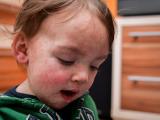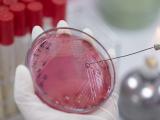Sep 22, 2011
Defense department dismantles bioterror countermeasures program
The US Department of Defense's Transformational Medical Technologies (TMT) program, begun in 2006 to accelerate the development of countermeasures against bioterror agents, is being dismantled, according to a report yesterday in the Nature News feature of the journal Nature. TMT's parent organization, the Defense Threat Reduction Agency, is folding some TMT projects into other Pentagon efforts and shifting their priorities, according to the report. Critics of the program say it was ill-conceived, wasted tremendous amounts of money, and has failed in its main objective to provide a faster, new approach to biodefense. No antibiotics developed by the TMT have entered clinical trials, and the drug candidates it has developed are for single pathogens, not multiple threats, according to the story. But the program's architects defend the 5-year, $1.5-billion project, saying it has laid the foundation for future successes. "If we get an engineered threat or something that we haven't seen before that is causing a lot of deaths, we think we can respond to that," said TMT program manager David Hough. TMT awarded AVI BioPharma, of Bothell, Washington, a 6-year, $291-million contract to fund clinical trials of its drugs against Ebola and Marburg viruses, which will continue in spite of TMT's future.
Sep 21 Nature News story
US measles cases recently imported from Malaysia
State and county public health officials and those from the US Centers for Disease Control and Prevention (CDC) confirmed measles in six refugees from Malaysia traveling to the United States recently, as well as in three people who may have had contact with them, according to their report published today in Morbidity and Mortality Weekly Report (MMWR). They report on a 15-year-old originally from Myanmar who traveled to Los Angeles Aug 24 from Kuala Lumpur, Malaysia, which is experiencing ongoing measles outbreaks and is home to many refugees. The teen had developed a fever Aug 21 and a rash the next day, and was hospitalized in Los Angeles Aug 25. State officials notified the CDC on Aug 26 of the suspected case, which was confirmed Aug 30. The index case-patient's 16-year-old sibling had had a febrile rash illness Aug 18 that LA officials determined was measles but ruled that the older teen was not infectious during the flight. Subsequently, health officials in Maryland and South Carolina reported cases in unvaccinated refugee children aged 7 months, 2 years, and 14 years who were on the same flight. And Wisconsin notified the CDC of a case in an unvaccinated 23-month-old Myanmar refugee from Malaysia who contracted the disease but arrived on a different flight on Aug 24. Contact investigations discovered two cases in unvaccinated children who were not refugees but sat nine rows from the index patient. In addition, a US customs officer with unknown vaccination status who processed the index patient also tested positive. The report states, "Rapid control efforts by state and local public health agencies have been a key factor in limiting the size of this outbreak."
Sep 23 MMWR report
ResistanceMap tracks global antibiotic-resistance trends
The latest iteration of ResistanceMap, which features tools for tracking global antibiotic-resistance trends, was launched today by Extending the Cure, a Washington, D.C.–based organization studying antibiotic resistance. The tools help identify top-performing countries and US regions as well as areas where antibiotic-resistant infections are severe, according to an Extending the Cure press release yesterday. Its maps show that the United States still has one of the highest rates of methicillin-resistant Staphylococcus aureus (MRSA) in the Northern Hemisphere—putting it far behind developed European countries in controlling spread of the infection. Nearly 52% of US S aureus samples are antibiotic-resistant, compared with just 1% in Sweden, according to the release. "With this tool, public health officials, researchers, and others can see the progression of antibiotic resistance in the United States and worldwide," said Ramanan Laxminarayan, PhD, director of Extending the Cure. "In addition, this map allows us to look for solutions and pinpoint regions of the world where infection control practices have been particularly successful."
Sep 21 Extending the Cure press release
ResistanceMap home page






















